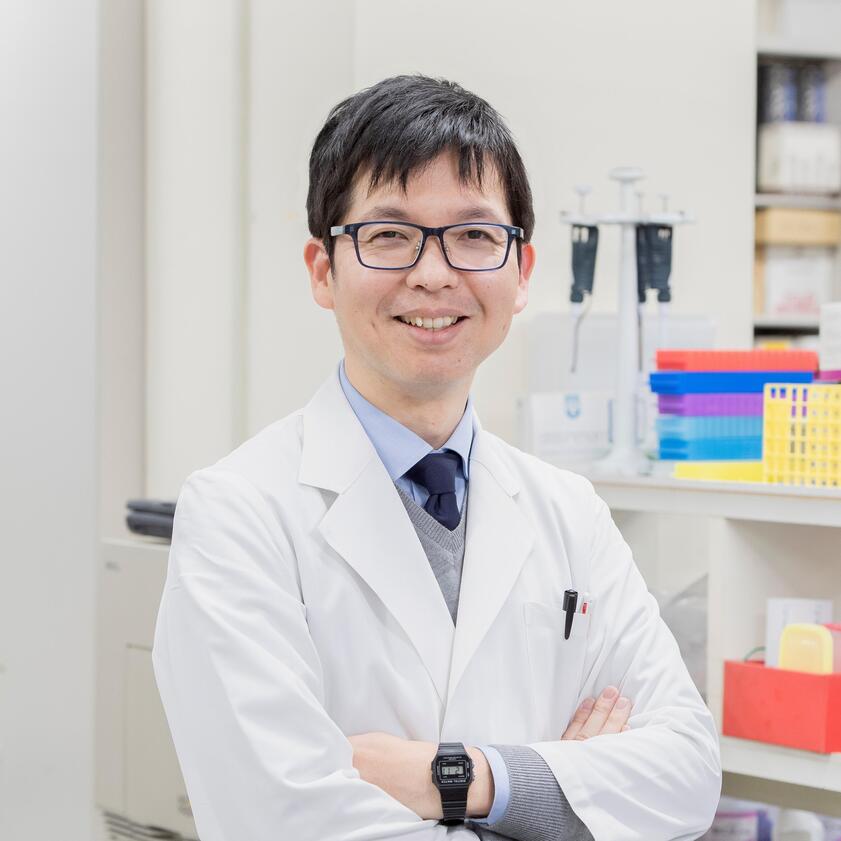Professor Ryuichiro Higashinaka

Researchers'
Associate Professor
Jun Ueyama
Graduate School of Medicine
It is a philosophy advocated by Matsuo Basho (from "Kyoraisho") to add a new twist to something fundamental that will never change. Thanks to many people, I would like to contribute to the development of medical science by balancing the significance, value, and mission of my existence as a researcher and educator, which I have discovered thus far (immutable, which does not change) and what is new (which should change) to suit the environment and needs of the times. I believe that these words teach me how to be prepared, and I try to consciously remind myself of them.
I am conducting research to evaluate through epidemiology whether the low concentration and long-term exposure (absorption) of chemicals around us, especially pesticides and agricultural chemicals, affect our health. In particular, I am developing a method to evaluate "how much of a chemical substance is absorbed by the human body" (exposure assessment method). I do not work in the lab all the time, and I visit farmers to collect samples, help out at children's health checkups, and sometimes go to the park to catch mosquitoes.
If you can be flexible with the term "research," it started with my graduation research at the School of Health Sciences. However, the experiments did not begin immediately, and I learned about the history and current situation of Nagoya University and the School of Health Sciences. This helped me understand the approach to conduct research from various angles, and I think this was beneficial to what I am doing now. The research used a measurement device called high performance liquid chromatography, and I was buried in a pile of thermal paper that captured the results (now processed by PC). I was preoccupied with completing the task at hand.
I may be a little out of sync with everyone else, but it is when I find a question that I can approach. There are many questions, both large and small, but I found it particularly interesting when I discovered that some questions have been shelved without any fundamental examination. For example, recently, when analyzing metabolites in stool, I ask the following questions: "What part of the stool should I analyze? How stable is it?" I remember starting my research realizing that the questions everyone would ask were not clarified, and that many researchers needed that information. I have learned numerous experimental designs and methods (theories), but am troubled by the fact that there is very little information on how to find questions and their training methodologies.
With recent improvements in measurement technology, pesticides and household insecticides can be detected even in the urine of ordinary people. When unexpected interpretations were made of the measured values that we published in our papers, I realized the importance of scientific communication with the public. At the same time, I felt the need to ensure the reliability of the measured values, and was able to obtain a certification of accuracy assurance for the laboratory. We are probably the only university laboratory in Japan to receive this certification.
I would like to say that I have much time to enjoy my hobbies and exercise to maintain my health; however, I currently spend about half my time catching up on work. The other half is spent playing with my children (and a little housework) to reinvigorate myself. The Daiko campus has nice surroundings with many trees, and I often walk during my spare time. In particular, the "Wang Zhao Ming Plum Tree" in the south wing of the building is a delight to the eye with its beautiful flowers every year, and it also gives me a sense of the history of Nagoya University.
Not that I am hiding it, but in my room, there is calligraphy that was used as the model of the plaque of the School of Health Sciences (my department and alma mater). It was written by the tenth president of the university, Dr. Nobuo Kato, and handed down to me by my former teacher (who called himself Dr. Kato's first student). Now that my teacher has retired, I have inherited the calligraphy and hung it in my room, and it makes me nervous in a good way, like someone is watching me.
Here at the Daiko campus, it is easy for me to collaborate organically with specialists in various health science fields, and more recently, I have been able to acquire knowledge and skills in the field of information science. I would like to continue to share the "excitement of discovery that only we know," which is born from the pursuit of questions, by creating new initiatives with the students who are the main actors in our laboratory, keeping in mind the aforementioned favorite phrase: "The importance of adding new elements to what is immutable."
Name: Jun Ueyama
Department: Graduate School of Medicine, Department of Health Sciences
Title: Associate Professor
Career history and hobbies:
After completing the master's course at Nagoya University Graduate School of Medicine in 2004, he worked at the Clinical Laboratory, Nagoya University Hospital. After that, he was appointed as an assistant professor at the Department of Integrated Health Sciences, Nagoya University School of Medicine, and received his doctorate (Doctor of Medicine) from Kanazawa University in 2009. He has been in his current position since 2011, where he received an award from the Japan Society of Hygiene in 2017. He has been a member of the Ministry of the Environment's Task Force on monitoring human exposure to chemical substances since 2017.
His hobbies include fishing.